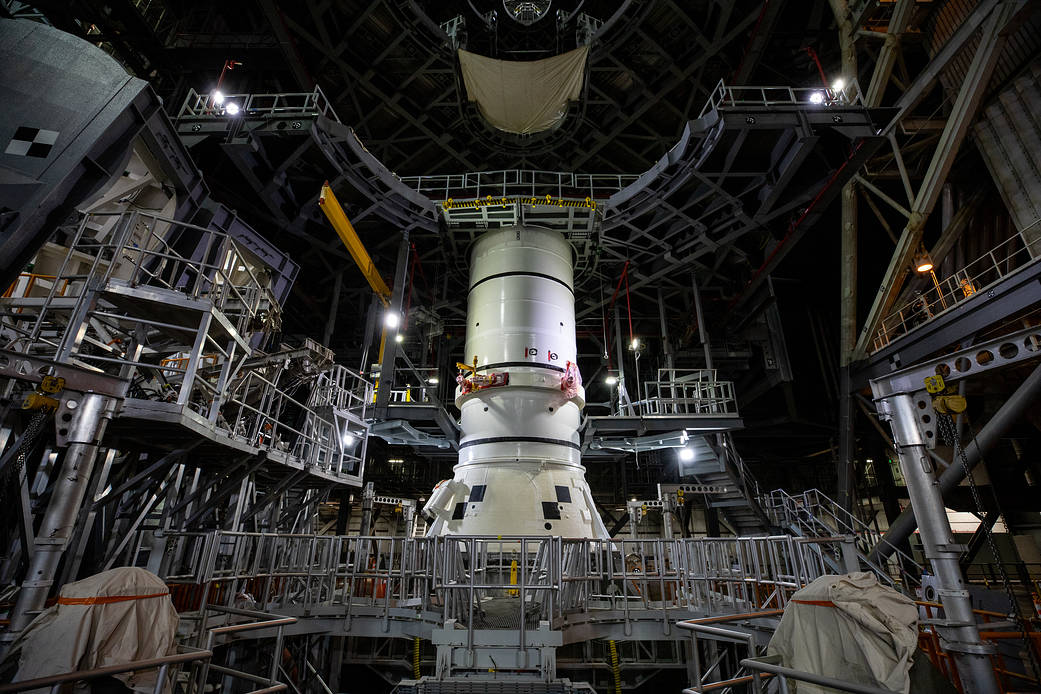The first of 10 pieces of the twin Space Launch System (SLS) rocket boosters for NASA’s Artemis I mission was placed on the mobile launcher Saturday, Nov. 21, 2020, inside the Vehicle Assembly Building (VAB) at NASA’s Kennedy Space Center in Florida. Engineers used one of five overhead cranes to lift the segment from the VAB’s High Bay 4 to the newly renovated High Bay 3. The component is the bottom section of the booster, known as the aft assembly, which house the system that controls 70% of the steering during the rocket’s initial ascent. Over several weeks, the other segments will be stacked one at a time and topped with the forward assembly.
Launching in 2021, Artemis I will be an uncrewed test of the Orion spacecraft and SLS rocket as an integrated system ahead of crewed flights to the Moon. Under the Artemis program, NASA aims to land the first woman and the next man on the Moon in 2024 and establish sustainable lunar exploration by the end of the decade.
Image Credit: NASA/Cory Huston
2020年11月21日星期六,美国宇航局在佛罗里达州肯尼迪航天中心的运载火箭组装大楼(VAB)内,为NASA的阿尔忒弥斯1号(Artemis I)任务准备的10个双发射系统(SLS)火箭助推器中的第一个被放置在移动发射装置上。工程师们使用五台桥式起重机中的一台将该段从VAB的4号高舱室提升到新装修的3号高舱室。这个部件是助推器的底部,也就是尾部组件,它容纳了控制火箭初始上升过程中70%转向的系统。在几个星期内,其它部件将一次堆叠一个,并在顶部安装前组件。
阿尔忒弥斯1号将于2021年发射升空,它将是对猎户座飞船和SLS火箭的一个未乘飞机测试,它是在乘员飞往月球之前的综合系统。根据阿尔忒弥斯计划,NASA的目标是在2024年使第一位女性和下一位男性登上月球,并在本世纪末建立可持续的月球探测系统。
影像来源:NASA/Cory Huston




不上去过一次了嘛,时隔这么多年又花钱上去干嘛?